Music theory often brings up different emotions for musicians. It seems complicated, yet everyone wants to understand it.
This desire arises from acknowledging its importance, with the cornerstone being understanding the notes on the Bass fretboard.
But what are bass guitar notes, exactly?
How many are there, and how does one note become adept at identifying them across the fretboard of a bass guitar?
Let’s explore these questions and uncover the keys to mastering the intricacies of the bass fretboard.
What is a Note?
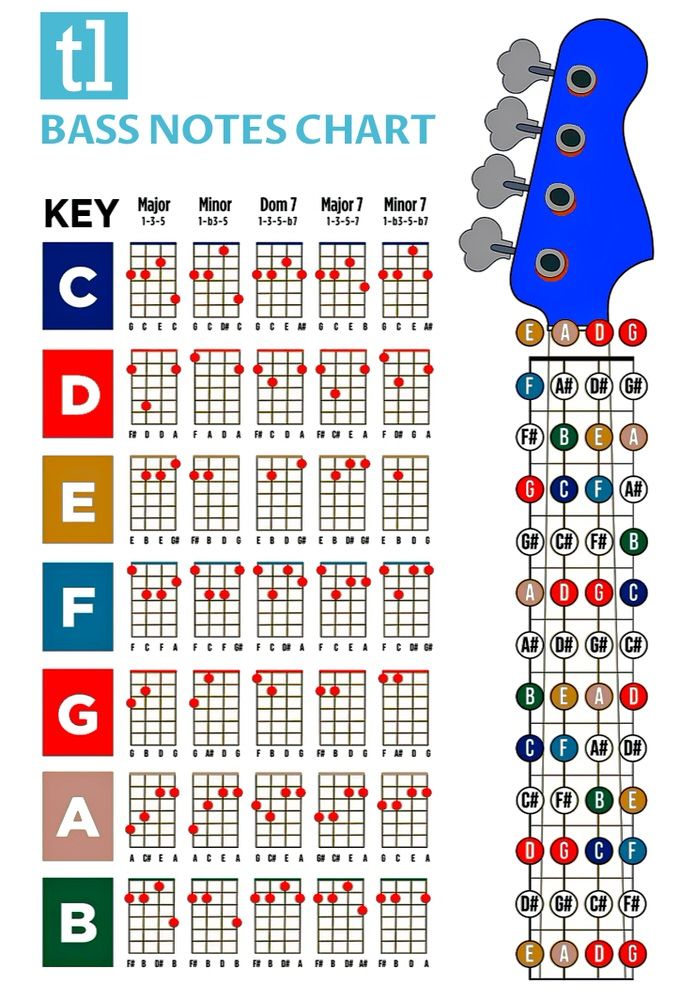
A note in music is a fundamental element of sound that represents a specific pitch and duration. It serves as the building block of melodies, harmonies, and rhythms, providing structure and meaning to musical compositions.
Each note is characterized by its pitch, which is determined by its frequency or vibration rate, and its duration, which denotes how long the note is sustained.
In Western music notation, notes are represented by symbols placed on a staff, a set of horizontal lines and spaces. The pitch of a note is indicated by its vertical position on the staff, while its duration is represented by the shape of the note symbol and additional markings, such as flags or stems.
The basic set of notes in Western music consists of twelve pitches within an octave, which is the interval between one musical pitch and another with double its frequency.
These twelve pitches are named using the letters A through G, with variations denoted by sharps (#) and flats (b) to indicate deviations from the standard pitch.
For example, A#, also known as Bb, represents a pitch that is slightly higher than A, while B♭, also known as A#, represents a pitch that is slightly lower than B.
Furthermore, each note can be altered in duration by applying different types of musical notation, such as whole notes, half notes, quarter notes, and so on.
These durations dictate how long a note is held or sounded relative to other notes within a musical composition.
Understanding the Basics of the Bass Fretboard
The bass fretboard is a foundational component of the bass guitar, serving as the primary interface between the player and the instrument’s pitch range.
Mastery of the bass fretboard is crucial for bassists to navigate and express themselves effectively in various musical contexts. This understanding encompasses several key aspects, including the anatomy of the fretboard, its layout, and essential terminologies associated with fretboard navigation.
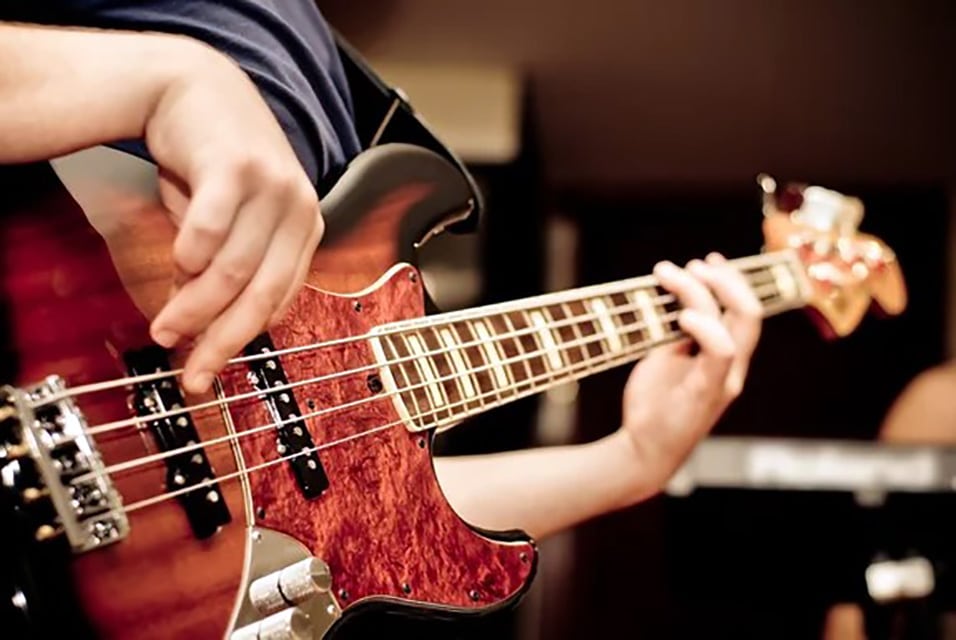
The Anatomy of the Bass Fretboard
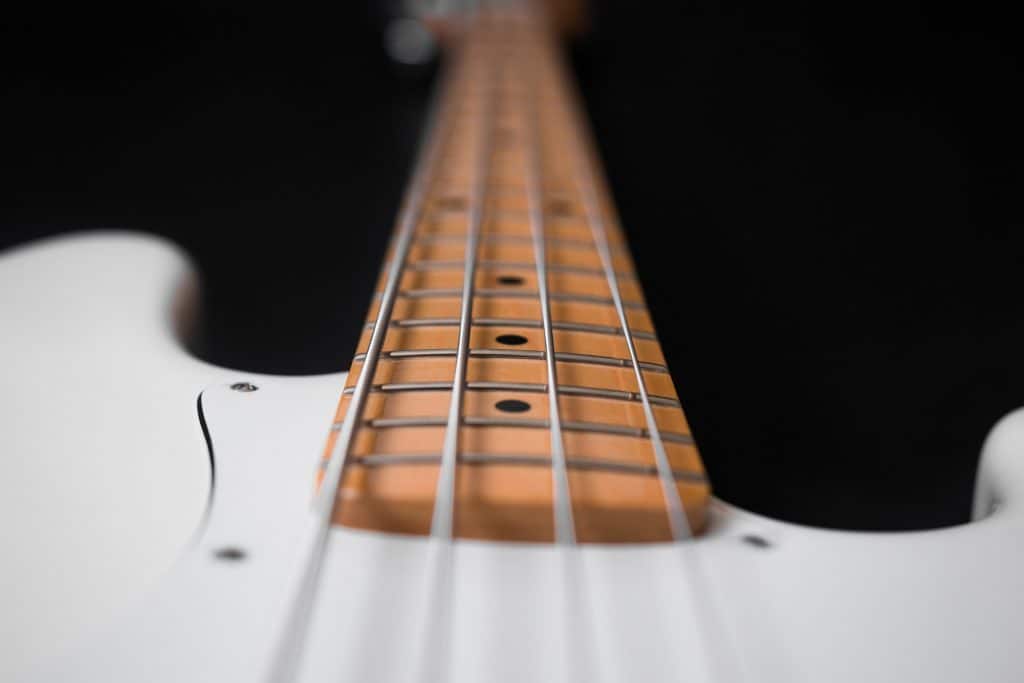
The metal strips embedded along the neck of the bass guitar are known as frets. These frets divide the neck into distinct intervals, allowing the player to produce different pitches by pressing the strings against them.
The bass guitar typically features four strings, tuned to pitches of E, A, D, and G. Each string is responsible for producing a specific range of frequencies, with the lowest pitch (E) positioned closest to the player and the highest pitch (G) positioned farthest away.
Fret markers are visual indicators placed on the fretboard to assist bassists in orienting themselves and locating specific positions. These markers often appear as dots or other shapes on the bass guitar fretboard, typically at intervals corresponding to specific fret numbers (e.g., 3rd, 5th, 7th frets).
The nut is a small strip located at the top of the bass guitar’s neck, serving as the endpoint for the strings nearest to the headstock. It plays a crucial role in defining the length and tension of the strings, as well as facilitating accurate tuning.
Navigating the Fretboard: Key Terminologies
As you get better at playing the bass, you’ll learn some special words that bass players use to talk about the fretboard. These words will help you understand and talk about bass playing with other musicians.
These are the fundamental building blocks of music. Each fret on the fretboard corresponds to a specific note (C, D, E, etc.).
Encompassing twelve notes, octaves represent a set of notes that recur at a higher or lower frequency. The fretboard offers the opportunity to explore the same note across various octaves.
These are meticulously arranged sequences of notes that, when played together, produce a characteristic musical flavor. Mastering scales unlocks a vast musical vocabulary, empowering you to create compelling bass lines.
Navigating the Bass Fretboard: Patterns and Positions
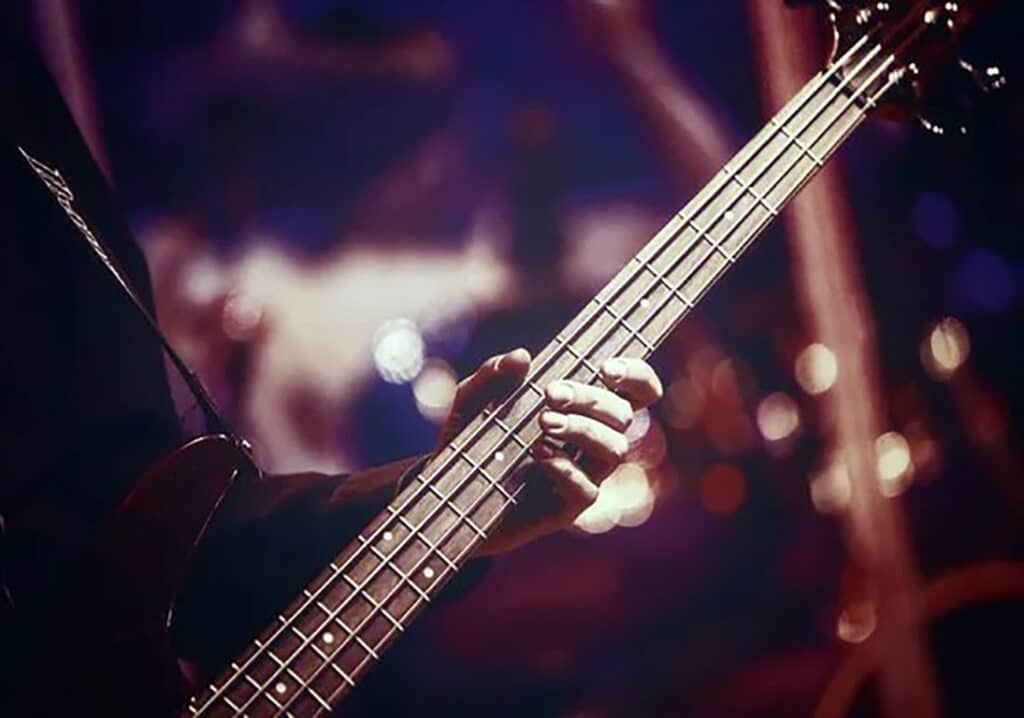
Patterns and positions are integral concepts for navigating the bass fretboard efficiently. Patterns refer to recurring shapes and sequences of notes that span across the fretboard, facilitating the execution of scales, arpeggios, and melodic motifs.
By recognizing and internalizing these patterns, bassists can traverse the fretboard with agility and confidence, unlocking a myriad of musical possibilities.
Positions, on the other hand, denote specific locations along the fretboard where a player’s hand is positioned to execute certain musical passages.
Understanding how to transition between positions seamlessly enables fluid movement across the neck, enabling bassists to play with precision and expressiveness.
Practical Strategies for Mastering the Bass Fretboard
To truly master the bass fretboard, it’s essential to approach it systematically. By breaking down the fretboard into manageable chunks and employing targeted practice techniques, you can gradually build your familiarity and confidence.
Developing Efficient Practice Routines
Ditch the aimless playing. Design targeted exercises focusing on specific fretboard areas, challenging scales, or intricate techniques.
Begin slowly with a metronome, gradually increasing speed as proficiency builds. Isolate and conquer tricky sections in songs before moving on.
Aim for consistent daily practice, even if it’s just 15 minutes. Short, focused sessions are more effective than marathon ones.
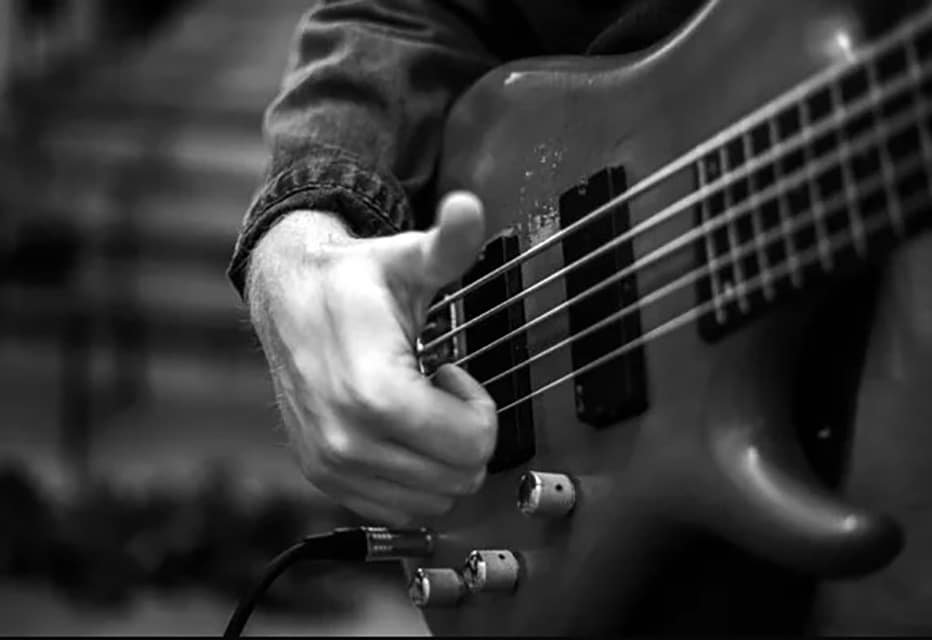
Consider recording yourself to identify areas requiring improvement, allowing for targeted practice in subsequent sessions.
Improving Finger Strength and Agility
Regular finger stretches are paramount for improving flexibility and fretboard reach. Lighter gauge strings (especially for beginners) can ease playing initially, but ultimately choose strings that feel most comfortable. Develop even finger pressure when fretting notes to achieve a clear, resonant sound. Practice both picking and fingerstyle techniques to become a master of dexterity.
As your finger strength develops, progressively increase the tempo of your exercises to cultivate speed and agility.
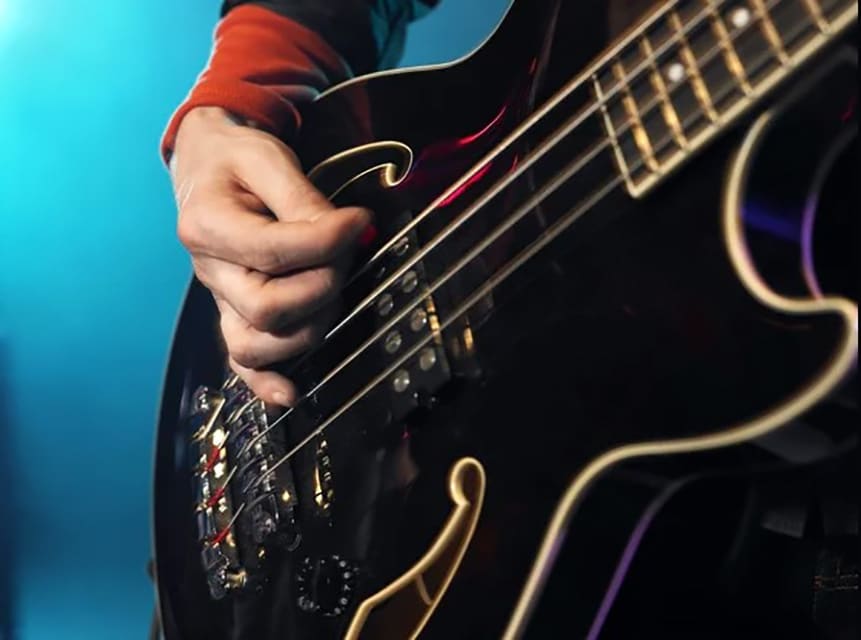
Integrating Ear Training for Note Recognition
Understanding intervals (the distance between two notes) is key to unlocking the secrets of scales and chords.
Sing along with your scales and exercises, solidifying the connection between what you hear and what you play.
Utilize ear training apps and software to make the process engaging and interactive. Challenge yourself to transcribe simple melodies by ear, forcing keen listening and note identification.
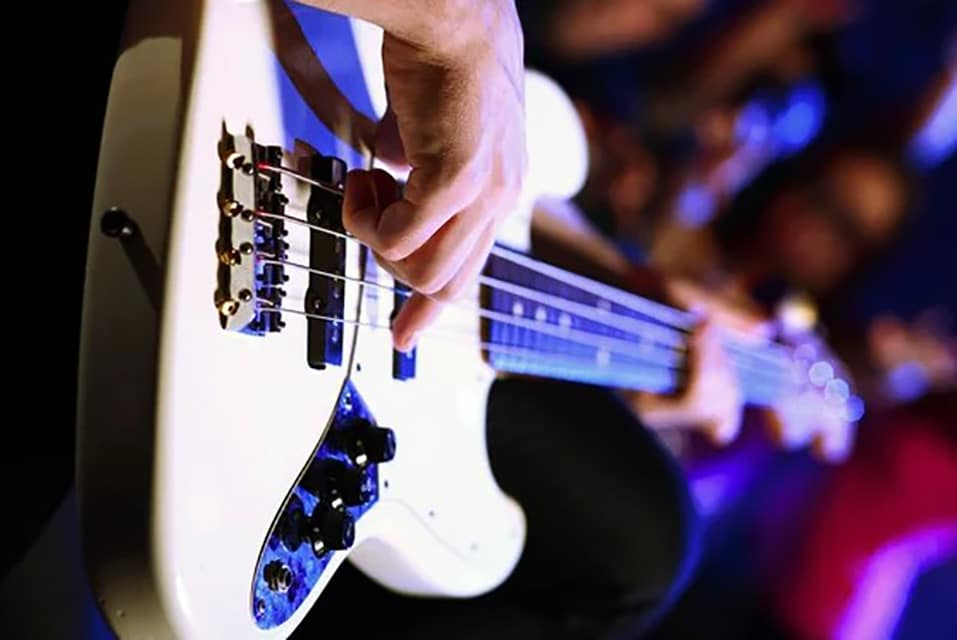
Jamming with backing tracks in various keys puts your ear training to the test in a musical context.
Applying Fretboard Knowledge in Real-World Scenarios
Learn the bass lines of your favorite songs – it’s a fun and practical application of your knowledge. Master the major scale across all frets, as it serves as the foundation for most music.
Explore common bass lines such as walking bass and slap techniques to broaden your skillset. Feeling confident? Craft your own bass lines for songs, or even write your own music! The ultimate test lies in jamming with a band, where your fretboard knowledge and musicality truly come alive.
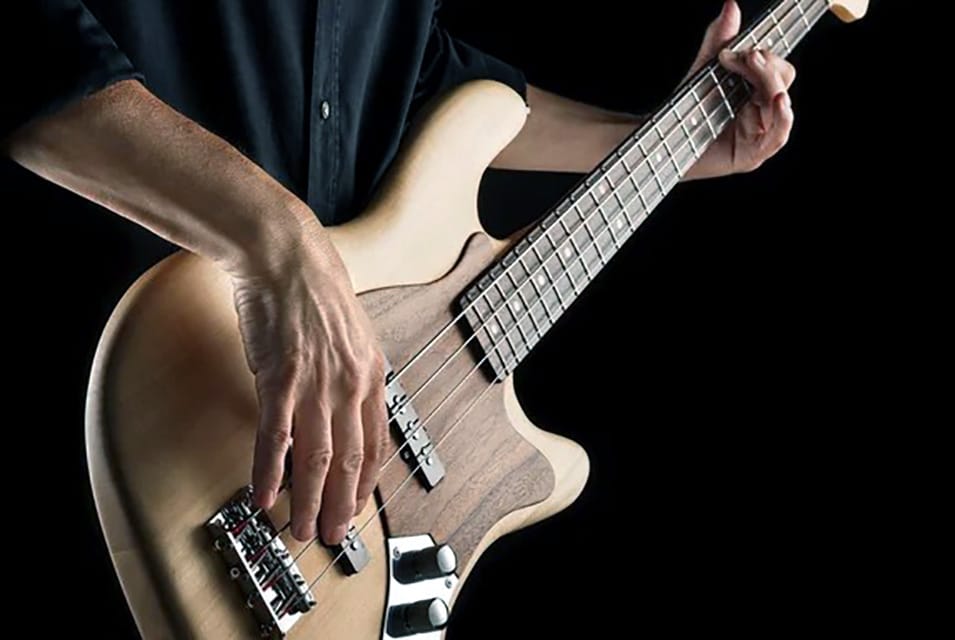
Best Beginner Bass Guitars
Squier Affinity Precision Bass PJ MN
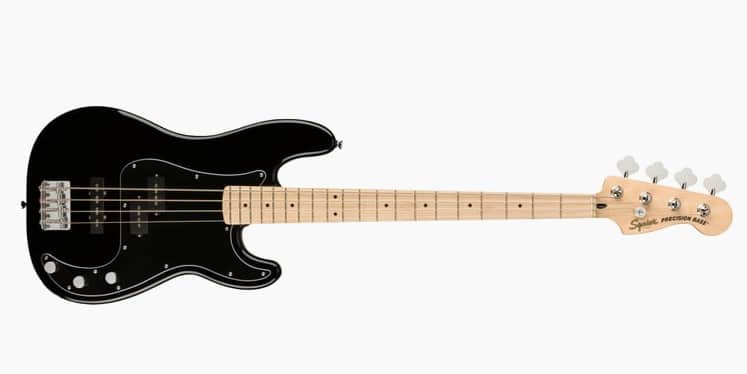
FEATURES: Scale Length: 34"
OTHER INFO: Frets: 20
- Versatile tonal options with PJ pickup configuration
- Affordable price tag
- Solid tuning stability
- Eye-catching Olympic White finish with black pick guard
- Scratch and chip resistant
- Suitable for beginners or as a mod project
- Pickup sound lacks some warmth and dimension compared to higher-end counterparts
- Rough and poorly finished neck and fingerboard
- Frets are on the rougher side and could use sanding
When you click ‘Check Price’, you’ll see there are loads of great places to buy this item. Our personal favorite is Sweetwater for the US, and Thomann and Gear4Music for the UK & Europe.
They are the largest music retailers, with excellent customer service, competitive prices, really fast shipping, and the longest guarantees.
The professional musician who wrote this article combined many things,
from the product build, manufacturer’s reputation through to feedback
from other users, to create our famous TedScore™.
Ibanez GSR200B GIO Bass

PERFECT FOR: Beginner
FEATURES: Nut Width: 41mm
OTHER INFO: Scale Length: 34"
Ibanez GSR200B GIO Bass
- Sleek Walnut Flat Finish for a Classic Look
- Comfortable Neck Profile for Easy Chord Progressions
- Two Pickup Configurations for Varied Tonal Options
- Lightweight Design for Easy Transport
- Suitable for a Variety of Music Genres
- May not meet the demands of professional and performance settings
- Limited power and volume compared to higher-end bass guitars
When you click ‘Check Price’, you’ll see there are loads of great places to buy this item. Our personal favorite is Sweetwater for the US, and Thomann and Gear4Music for the UK & Europe.
They are the largest music retailers, with excellent customer service, competitive prices, really fast shipping, and the longest guarantees.
The professional musician who wrote this article combined many things,
from the product build, manufacturer’s reputation through to feedback
from other users, to create our famous TedScore™.
Sterling Stingray Ray4 Bass
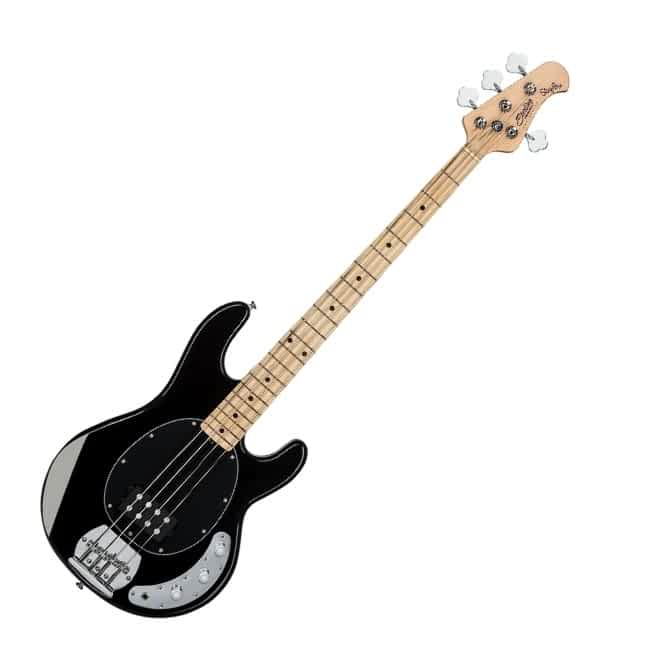
FEATURES: Strings: 045-105
OTHER INFO:Body Material: Basswood
- Delivers iconic StingRay sound and aesthetics at a budget-friendly price.
- Impeccable build quality rivals higher-tier instruments.
- Versatile 2-band EQ for a wide range of tonal possibilities.
- Comfortable neck and lightweight body for extended playing sessions.
- Striking finishes cater to individual style preferences.
- Intuitive controls provide effortless tone shaping.
- Tuning stability may require occasional adjustments.
- Minor cosmetic blemishes may be present.
- Single humbucker pickup limits tonal variations.
- Limited control knobs may not offer extensive tonal sculpting compared to more complex instruments.
When you click ‘Check Price’, you’ll see there are loads of great places to buy this item. Our personal favorite is Sweetwater for the US, and Thomann and Gear4Music for the UK & Europe.
They are the largest music retailers, with excellent customer service, competitive prices, really fast shipping, and the longest guarantees.
The professional musician who wrote this article combined many things,
from the product build, manufacturer’s reputation through to feedback
from other users, to create our famous TedScore™.
Notes On The Bass Fretboard
Summary
Learning the notes on the bass fretboard takes time and practice but unlocks a world of musical possibility.
By understanding where each note lies, you’ll be able to play bass lines with confidence, improvise with ease, and truly connect with your instrument.
Now, it’s your turn!
What are your favorite tips or tricks for memorizing the fretboard?
Share them in the comments below!
And don’t forget to look at our dedicated Bass Notes Chart Guide to help you out!
FAQ's
The notes on a bass guitar fretboard depend on two factors:
-
Open String Notes: These are the notes produced by plucking the strings without pressing down on any frets. In standard tuning, a 4-string bass has the notes E (thickest string), A, D, and G (thinnest string), going from lowest to highest pitch. 5-string basses add a low B string before the E.
-
Fretted Notes: Pressing a string down on a fret shortens the vibrating length, producing a higher pitch than the open string. Each fret corresponds to a specific semitone (half step) in the musical alphabet.
There’s a slight misconception here. The bass guitar fretboard uses the same musical alphabet (A, B, C, D, E, F, G) as a piano keyboard, but it only displays a portion due to its range.
By itself, a single fret on a bass only raises or lowers the pitch by one semitone. However, most bass lines utilize multiple frets and strings, allowing you to play all 12 notes within an octave (and beyond) on a 4-string bass. 5 and 6-string basses extend this range even further.
The order of notes on a single bass string follows the chromatic scale, which includes all 12 notes (including sharps and flats). For example, the E string goes from E -> F -> F# -> G -> G# -> A, and so on.
The beauty of the fretboard is that the same notes appear at higher octaves across different strings. For instance, the G you play on the open 3rd string is the same note (but higher in pitch) as the G fretted at the 12th fret of the E string.











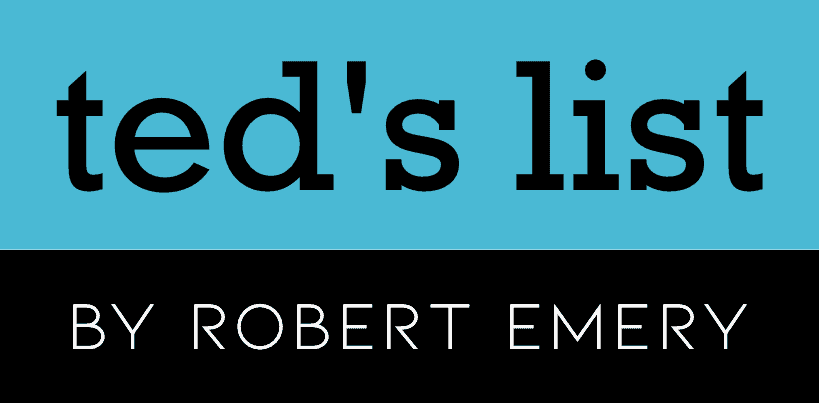
I appreciate the section on practical strategies for mastering the bass fretboard. Time to put theory into practice.
Man, this breakdown of the bass fretboard is gold! I’ve been messing around with tabs, but actually understanding what I’m playing is a game changer. Big thanks to Lewis Turner for laying it out like this. Makes me feel less intimidated by all those frets, haha.
Absolutely, man. It’s like the difference between just speaking a language and actually understanding it. You get what I’m saying?
Does understanding the fretboard really make a big difference though? I just learn songs I like and seem to do fine.
Loved the section on integrating ear training for note recognition. Using this technique has drastically improved my ability to play by ear, and I highly recommend it to anyone struggling to connect what they’re playing with what they’re hearing. It sounds daunting at first, but with consistent practice, you start picking up on the nuances of different notes and where they’re located on the fretboard. Can’t stress enough how valuable ear training is in becoming a well-rounded musician. Thanks for shining a light on this often overlooked practice,
Lewis Turner.
So many guides out there claim to have the secret sauce to mastering the fretboard. Yet here we are, another day, another ‘ultimate guide’. What makes this so different from the rest?
Oh, so now we’re pretending that bassists actually learn the fretboard? Kidding. But seriously, good on Lewis for making it look so doable. Might convince a few guitarists to convert.
Fascinating breakdown of the bass fretboard. Understanding the instrument’s anatomy is crucial for any beginner. The detailed patterns and positions mentioned can really make a difference in how effectively one learns to play. It simplifies a complicated subject into understandable chunks.
Hey Lewis, just started my journey with the bass guitar, and I’m kinda struggling with the bass fretboard. I get the basics, but navigating through it feels like a maze. Got any tips on remembering where each note is? I heard about these patterns and positions you mentioned, but how do you actually start memorizing them without getting all mixed up?
in the same boat here, just picked up the bass after guitar. it’s confusing but kinda fun too, right? lol
Hey MaddieJ_89, it’s all about practice and muscle memory. Try focusing on one string at a time, and use scales to help learn the positions. Keep at it, you’ll get there!
Hey, I’m just starting out on bass. Is there a type of music that’s easiest to start with for practicing those fretboard patterns?